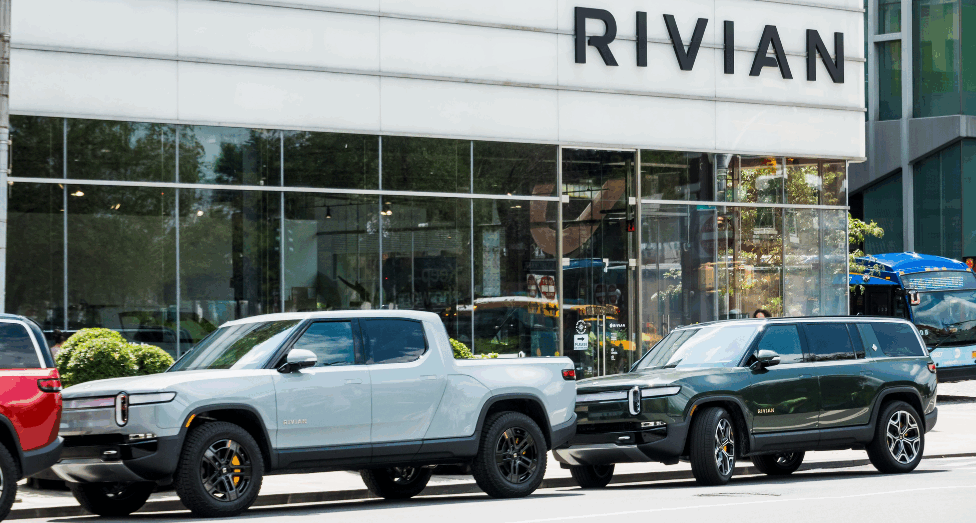2025 Rivian R1T and R1S Tri-Motor Review: Quicker Than the Old Quad, Built In-House
When are three motors better than four? It seems that is when you drive the 2025 Rivan R1T and R1S models, which seem faster with three motors than four.
Rivian updated its electric motors recently, which has resulted in something unexpected and unique. The company created new proprietary electric motors that provide an extra 195 lb-ft of torque for the truck and SUV models. This means these vehicles can hit 60 MPH quicker than before, which makes a lot of sense, but the other side of this story doesn’t make much sense.
Three motors are better than four
Electric vehicles are unique and new, but the idea of more motors and bigger batteries translates to more power make a lot of sense. It’s similar to gas-powered vehicles and displacement figures. What’s strange is that the new electric motors being used in Rivian vehicles make so much more power than three motors, which are better than four. Rivian is well-known for making Quad-Motor versions of its vehicles, but in recent testing, the Tri-Motor Max versions were three-tenths of a second quicker to 60 MPH than the Quad-Motor counterparts, offering a strange situation.
In-house build changes the game
Previous model years of the Rivian R1T and R1S had electric motors and batteries that were supplied by Bosch. Those motors are great and there’s nothing wrong with them, but Rivian now makes its batteries and motors in-house. These new motors have serious improvements, but most notably, they are more power-dense than the old motors. This power density is a big reason why these new motors produce 15 horsepower and 195 lb-ft of torque more than the old motors. This is part of the reason the new Tri-Motor Max configurations are quicker to 60 MPH than the pre-2025 Quad-Motor counterparts.
The numbers don’t lie
If you look at Rivian trucks and SUVs for model years prior to 2025, you’ll see the Quad-Motor versions deliver 835 horsepower and 908 lb-ft of torque. These are impressive figures and typically best any other vehicle, but not its own Tri-Motor Max models from 2025. These new Tri-Motor Max versions are good for 850 horsepower and 1103 lb-ft of torque. This means you get 15 more horsepower, which also means the top speeds might be similar, but you get 195 lb-ft more torque, which is significant and the main reason for improved sprint times.
At the track, the new 2025 R1S Tri-Motor Max posted a 60-MPH sprint of 2.8 seconds, compared to the Quad-Motor version’s 3.1-second result. The R1T had similar results with the new Tri-Motor Max version hitting 60 MPH in 2.7 seconds compared to 3.0 seconds for the older Quad-Motor versions.
Another contributor to Rivian’s improved speed
Power is always an important factor in vehicle speed and acceleration, but that’s not all that’s at play for the Rivian pair. The extra power helps a lot, but the Tri-Motor Max models also weigh less than the previous Quad-Motor versions. This makes perfect sense because with everything else being equal, these new versions have one less electric motor. The R1T lost 168 pounds, and the R1S dropped 57 pounds. Some of the weight loss is also attributed to the new Max battery pack using a reengineered die-cast carrier, which reduces mass.
There’s also a new Launch Control mode that wasn’t available for the previous Rivian models. This model allows the vehicles to squat low before taking off on the track for a sprint. This makes a huge difference in preparing the vehicle to rocket off the line.
Is Rivian keeping the Quad-Motor setup
With the transition to a new model year and improved power for the Tri-Motor Max Rivan vehicles, does it make sense for the company to continue to build Quad-Motor versions? It doesn’t matter if it makes sense; Rivan will continue to have Quad-Motor versions, which should be quicker and more powerful. In fact, these new versions will have a combined 1,025 horsepower and 1,198 lb-ft of torque, which makes them some of the fastest EVs on the market.
These new Quad-Motor Rivian vehicles should hit 60 MPH in 2.5 seconds for the R1S and 2.6 seconds for the R1T, respectively. These figures haven’t been confirmed with any testing yet, which means there could be some future excitement around how fast these Rivian vehicles will be.
Don’t forget the off-road factor
Although we’ve been covering the acceleration and sprint times of the latest Rivian vehicles, it’s important to keep in mind that these EVs are meant to be fun and adventurous vehicles for some off-road fun. This means you’ll go slow and steady on the trails, but imagine how much fun it will be to hit the accelerator and leave sports cars in the dust because you’ve got an electric SUV with massive power to drive the wheels.
The Rivian R1T and R1S are electric vehicles that have everything you want in one great package. They are versatile, easy to drive, useful, and extremely capable. They can tow heavy loads with confidence, but you have to be aware of the loss of driving range when hooking up a trailer. No matter what you want to do, Rivian has you covered; will you drive the new R1T or R1S?

